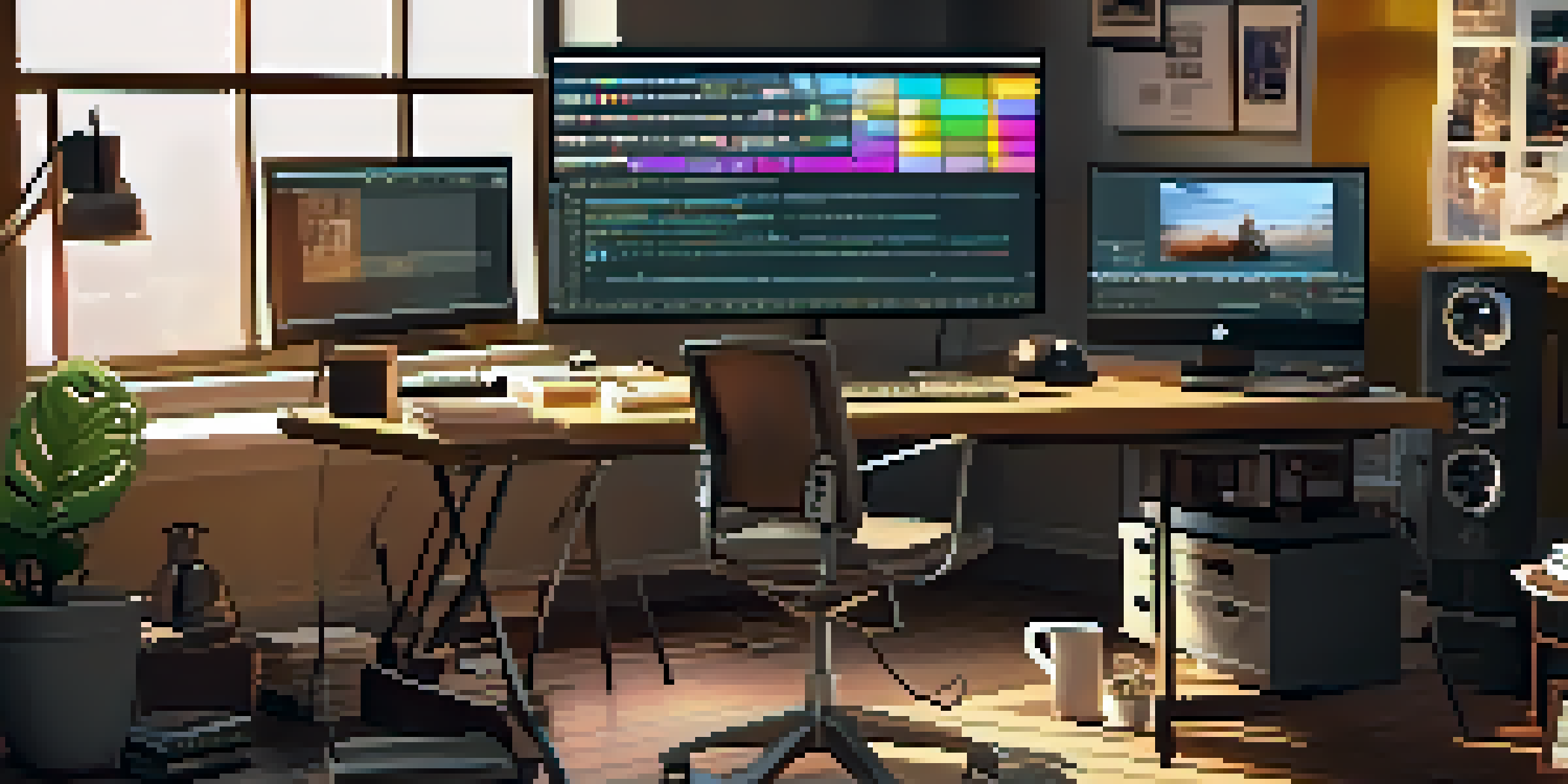The Role of Cutting Techniques in Film Narrative Development

Understanding Cutting Techniques in Film
Cutting techniques, often referred to as editing, are essential tools in filmmaking that can drastically affect how a story is told. By selecting and combining shots, editors create a rhythm that influences the audience's emotional response. These techniques include various styles like continuity editing, montage, and jump cuts, each serving different narrative purposes. Understanding these techniques sets the stage for appreciating their role in narrative development.
The Importance of Pacing in Storytelling
Pacing is a critical element in film narrative, and cutting techniques play a key role in establishing it. Quick cuts can create a sense of urgency, while longer takes might evoke contemplation or tension. For instance, in action sequences, rapid cuts keep viewers on the edge of their seats, while a slow dissolve can allow for emotional reflection. By manipulating pacing through cuts, filmmakers guide the audience's experience and engagement with the story.
Cutting Shapes Film Narrative
Cutting techniques are essential for controlling pacing, building tension, and enhancing emotional resonance in storytelling.
Creating Emotional Resonance Through Cuts
Emotional resonance in film is often achieved through effective cutting techniques. By juxtaposing contrasting shots, editors can highlight characters' emotions or thematic elements. For example, cutting between a character’s joyous reaction and a somber scene can deepen the emotional impact of a moment. This technique not only enhances storytelling but also helps the audience connect with the characters on a more profound level.
Building Tension and Suspense with Cutting
Tension and suspense are vital to captivating an audience, and cutting techniques are a filmmaker's secret weapon in this regard. Strategic cuts can heighten anticipation, as seen in horror films where a sudden cut can lead to a startling reveal. By controlling the timing and rhythm of cuts, filmmakers manipulate the viewer's expectations, drawing them deeper into the narrative. This careful orchestration of cuts becomes crucial in maintaining engagement throughout the film.
Cutting Shapes Film Narrative
Cutting techniques are essential for controlling pacing, building tension, and enhancing character development in filmmaking.
Establishing Character Development via Editing
Character development is another area where cutting techniques shine. By choosing specific moments to cut to, editors can reveal a character's inner thoughts or transformations over time. For instance, a series of cuts showing a character's changing expressions can effectively communicate their evolving state of mind. These editing choices allow audiences to witness character journeys in a nuanced way, enhancing the overall narrative.
Utilizing Cuts for Thematic Reinforcement
Cuts can also serve to reinforce themes within a film, creating a deeper connection to the narrative. For example, a filmmaker might repeatedly cut to a specific object or location to symbolize a character's internal struggle. This technique not only provides visual continuity but also enriches the storyline by adding layers of meaning. By integrating thematic elements through cutting, filmmakers create a more immersive experience for the audience.
Emotional Impact Through Edits
Effective cuts can create emotional resonance by juxtaposing contrasting shots, deepening audience connections with characters.
The Influence of Cutting Techniques on Audience Perception
The impact of cutting techniques extends beyond the film itself; they shape audience perception profoundly. Different cuts can evoke specific reactions, guiding viewers to interpret scenes in a particular way. For instance, a long take might instill a sense of realism, while a rapid montage might suggest chaos or nostalgia. By understanding how cuts influence perception, filmmakers can craft narratives that resonate more effectively with their audience.
Conclusion: The Power of Cutting in Film Narrative
In conclusion, cutting techniques are more than just a means to join scenes; they are integral to shaping a film's narrative. From controlling pacing and building tension to enhancing character development and thematic depth, cuts empower filmmakers to tell compelling stories. As audiences, recognizing the significance of these techniques allows us to appreciate the art of filmmaking on a deeper level. Ultimately, the power of cutting lies in its ability to transform raw footage into a powerful narrative experience.
Audience Perception Influenced by Cuts
Different cutting styles shape audience perceptions and reactions, guiding how viewers interpret scenes and themes.